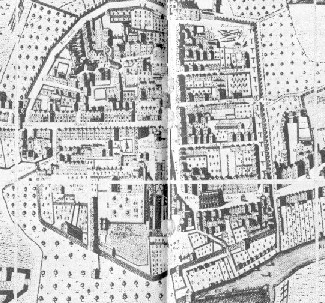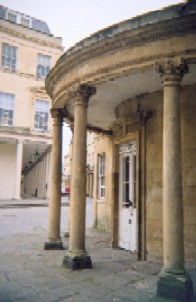|
|
|
| Home | Roman Bath | Dark Ages | Middle Ages | Upheaval | Georgian | Nineteenth century | Twentieth century | Twenty first century |

Bath was visited by many monarchs from Stuart times onwards. As its popularity grew so did its place in the agenda of the fashionable set. The first of the royals to to take the Bath waters was Queen Anne of Denmark - wife of James I of England (who was also James VI of Scotland -first monarch to rule both nations). Then came Charles I's queen, Henrietta Maria. Then Charles II, his queen Catherine, and his mistresses, then James II and his queen, Mary. Mary came to Bath believing herself to be barren. Her famous 'cure' in the Cross Bath brought that bathing place to prominence.
During the period of Bath's increasing popularity, its economy changed to reflect the new industry - tourism. The weaving which had formed the mainstay of Bath's employment died away gradually, and provision for eminent visitors took its place.

It may or may not be true that the term 'quack doctor' arose at this time - many supposed medical experts took up residence in Bath at this time, and were known as 'aquatic doctors' for their expertise in prescribing the use of the hot waters...shortened to 'quack'?
During the period of Bath's popularity the locals wisely celebrated the arrival of each successive monarch - but when the Civil War came, Bath lurched from Parliamentary to Royalist control - provided garrison for one, then the other - and fighting took place even within the walls. The Battle of Lansdown was in 1643, its wounded taking refuge in inns and churches in the city. After the war, the buildings were repaired, and were reported by Samuel Pepys in 1668 to be "very fair stone houses" with the town "most of stone, and clean, though the streets generally narrow". See Bath through the eyes of visitors for more on this.
One man had plans for the city of Bath: John Wood. The architect was responsible for many of the famous structures visible today - and for still more grandiose plans which did not come to fruition. More on this on the Georgian page.
Last updated 21 February, 2001
FabledCity by
| Home | Roman Bath | Dark Ages | Middle Ages | Upheaval | Georgian | Nineteenth century | Twentieth century | Twenty first century |